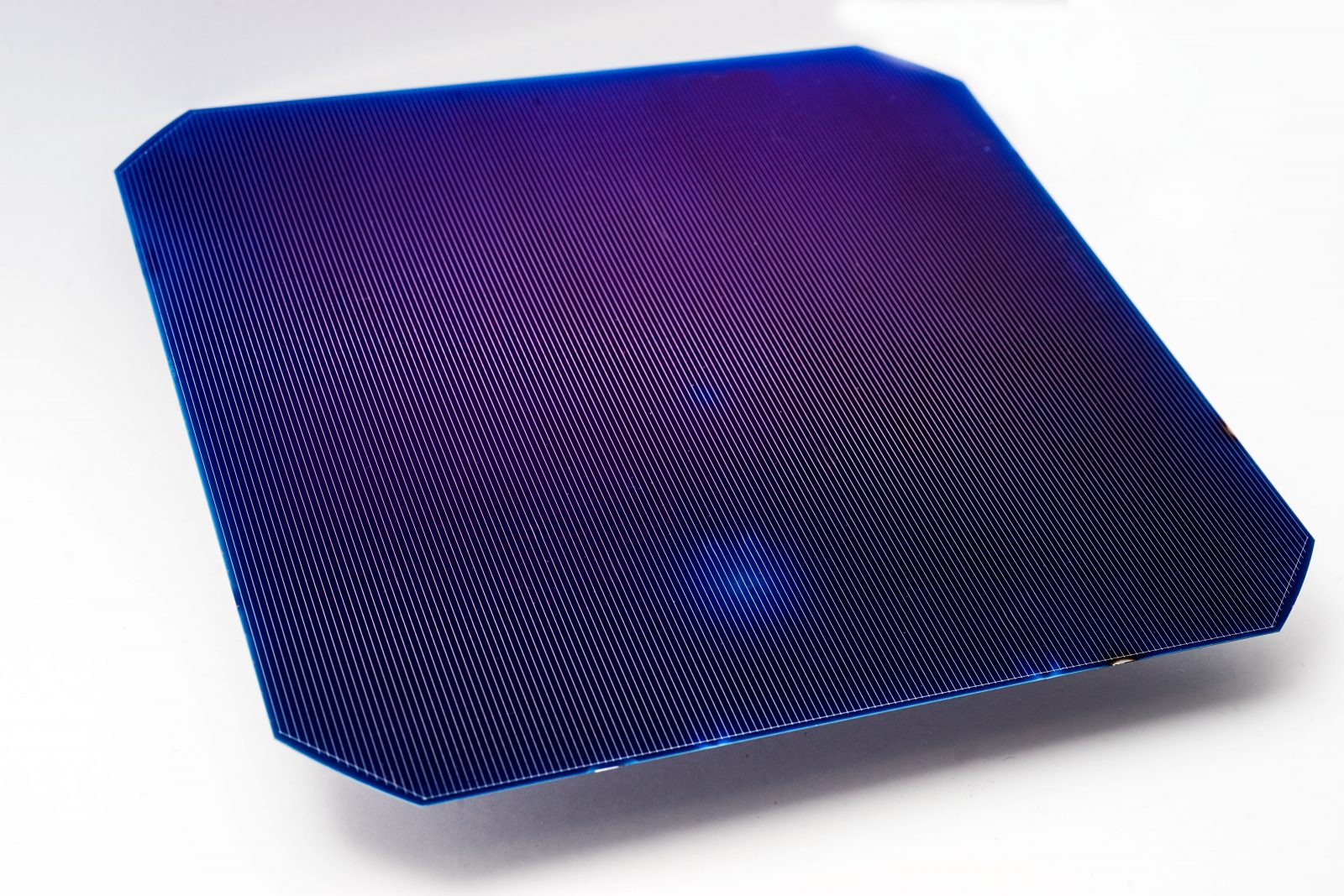MUNICH, Germany – June 20, 2016 – Imec, the world-leading nano-electronics research center and partner in Energyville, will present at this week’s Intersolar Europe/EU PVSEC a highly efficient bifacial n-PERT (BiPERT) solar cell featuring a bifaciality value close to 100%. With a rear cell efficiency close to the efficiency measured from the front of the cell, imec’s new achievement underscores the ability to strongly enhance the energy yield of photovoltaic (PV) modules made with this type of cell.
Bifacial solar cells not only capture the light falling on the front side of the solar panel, but also the light that reaches the rear side of the panel, such as light that is reflected from the background, from clouds, diffuse light, and even direct light at sunrise or sunset. Bifacial modules can therefore generate more energy as compared to traditional monofacial modules. Published field tests have indicated that, depending on albedo values and bifaciality, bifacial gains from 10 – 40 percent are achievable. Bifacial cells can also be integrated into traditional glass-back sheet modules. In this configuration, they benefit from the scattering of infrared light at the back sheet to compensate for the lack of a rear metal reflector and from light reflection in the gaps between the cells.
Imec’s bifacial n-PERT cells (BiPERT) feature very thin (< 5 μm) Ni/Ag plated contacts and no busbars on both sides of the cell, resulting in a symmetrical structure of high aesthetic value. The cells have the potential to deliver a very low Cost-of-Ownership (CoO), as they can profit from a bifacial gain, a low-cost metallization sequence, and the high efficiency potential of multi-wire interconnections that reduce optical shading and the required metal contact fraction.
Imec will present this achievement and insights in its conference presentation, “2CO 2.5 Bifacial n-PERT Cells (BiPERT) with Plated Contacts for Multi-Wire Interconnection,” on June 22 at 1:30 p.m.
For More Details : Imec Demonstrates Highly Efficient Bifacial Solar Cells with near 100% Bifaciality

